Review of Pom Poko
Introduction
This time last year, I had a brief encounter with a Touchstone video release of a Ghibli film, one that had me rushing off to Region 4 for a Miyazaki film with the Disney removed. Disney in UK Region 2 tended to alter Ghibli animations for their market, supplying an all-star dub, and subtitles reflecting that, instead of the translated subtitles. But in my haste to own the then definitive English Language version of Kiki`s Delivery Service I had jumped the gun, as Optimum had already started buying the rights to Ghibli animations in the UK, beginning with the release of Spirited Away and Grave Of The Fireflies. Since last autumn as Touchstone`s rights to the Ghibli catalogue have expired, Optimum has been releasing the Ghibli catalogue in more anime friendly forms. The Disney dub and hard of hearing subtitles remain, although the often lurid packaging has been dispensed with. But with the Japanese soundtracks is a translated subtitle track, which often makes quite a difference to the stories, as well as implementing the films` storyboards as multi angle featurettes. The new UK versions of Kiki`s Delivery Service, Princess Mononoke and the rest of the Ghibli catalogue continue to be released, with the highlight being the forthcoming release of Howl`s Moving Castle, but this review looks at Pom Poko, a lesser known feature from Studio Ghibli, directed by Isao Takahata who also directed Grave Of The Fireflies, and produced by Hayao Miyazaki.
Pom Poko is one of those eco-messages wrapped up in animation that comes along from time to time. A lot of Miyazaki`s work contains observations about humanity and how it interacts with the environment, but Pom Poko is much more straightforward, with the raccoons living on the verges of Tokyo finding their habitat vanishing as humans expand. These aren`t the raccoons of North America mind, but I suppose that `Tanuki` is much more accessible translated as `raccoon`, and the meaning comes across pretty clearly. However, these raccoons appear more like the result of a collision between a fox, badger and bear.
With their territory shrinking, the raccoons turn on each other to fight for the dwindling forest. It`s during this battle that we learn the odd fact that when out of sight of humans, raccoons walk on two legs like people. It takes the matriarch Oroku to make them see sense, that it is the humans tearing down their forest that are the enemy, not each other. The elder raccoons call a meeting, where it is decided to fight back against the humans, using the lost art of shape-shifting. Raccoons are like foxes and some cats in that respect, able to alter their appearance at will, as long as they have the energy to do so. Not everyone is agreed as to how to fight back, the aggressive Gonta is all for killing as many humans as possible, while the more gentle Shokichi would be happy with just driving them away. But with every victory comes a setback, and more and more of their home in Tama Hills becomes part of the Tokyo suburbs.
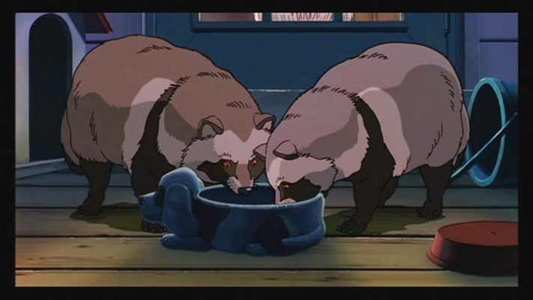
Video
Pom Poko gets an anamorphic transfer, and it eyeballs at roughly 1.9:1-ish. They really should write these ratios down somewhere. It`s a clear and sharp transfer, with the strong colours of the animation reproduced well. I only really noticed compression artefacts during fast and confused motion, but generally the image is strong. The animation is fluid and accomplished well, but lacks the detail of other Ghibli films. Pom Poko is weighted heavily towards comedy, and the character designs reflect that, and while the main characters are recognisable, the average raccoon tends to blur into homogeneity. It all works well, but doesn`t really strike me as memorable.
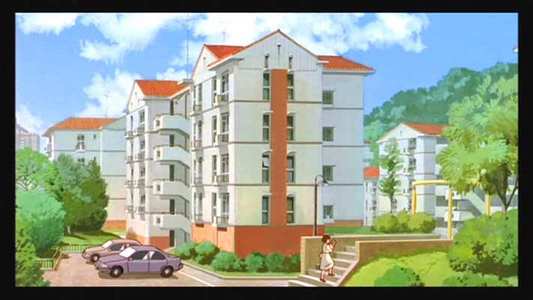
Audio
You get the alternative of DD 2.0 English or Japanese, and both soundtracks are effective if simple stereo tracks. The dialogue is clear throughout, and you can watch the film with translated signs, translated English subtitles or Hard of Hearing captions for the English dub. It also is worth pointing out the difference in dialogue on both tracks, with the English dub a far more family friendly version, featuring actors like Clancy Brown, Tress MacNeille, Olivia D`Abo, John DiMaggio, and J.K. Simmons. The only negative point would be the final song, which should have been subtitled as well.

Features
Optimum garnish Pom Poko with a light smattering of extras, most notable of which is the feature length storyboards, presented as a multi-angle featurette. You can switch at any point in the film to see the original pencil sketches. It`s all pretty straight forward.
Add to that the eight minutes of original trailers, the trailer for Howl`s Moving Castle, and an 11-minute collection of trailers for the rest of the Ghibli Collection, available or due from Optimum, and a cute little jacket picture that displays when the disc isn`t spinning, and that`s your lot.
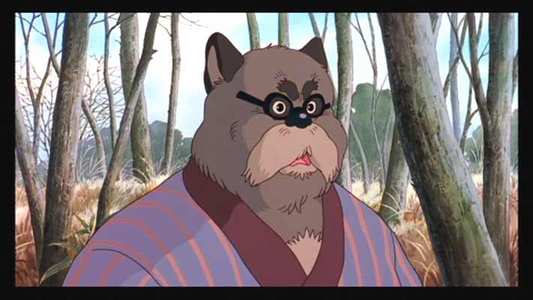
Conclusion
To go up against the inevitable encroachment of humanity, these raccoons have got to have balls, and they do, quite literally. Of course in the sanitised English dub, perfect for family viewing (just make sure you have the correct subtitle track on), the two dangly bits at the bottom of every male are referred to as a `raccoon pouch`. Nonsense of course, as everyone knows that only Australian raccoons have pouches. But watch the Japanese version, with the translated subtitles, and there is no denial, no equivocation, these are balls, nuts, testicles, and the uses these raccoons can put their balls to, with the aid of some shape-shifting magic, boggles the mind and makes the eyes water.
But novelty and comedy aside, Pom Poko doesn`t really impress as a film. It`s overlong for one thing, coming in at a smidgen under two hours. Much of that is taken up with the cat and mouse between the raccoons and the humans, and coupled with the fact that the story is told in retrospective narration; it invites glances at the watch. The piecemeal nature of the story makes it feel very much like a series of sketches rather than a single narrative. It`s also a story where the comedy threatens to overwhelm the message. Some of the events should be quite tragic, not everyone makes it to the end credits in one piece, yet I never really got to know any of the characters to sufficiently care. Also, there is none of the sense of wonder, the magic associated with other Ghibli titles, this is far too goofball for that. That said, there is some intelligence to the story, and the raccoon society is very much a reflection of our own, in the way they behave, the way they live and the way they relate to the world.
Ultimately, this topic has been covered in animation many times before, in films like Watership Down and Ferngully, The Last Rainforest, and shows like The Animals Of Farthing Wood, with greater seriousness and to better effect. These raccoons certainly supply plenty of comedy with their shenanigans, but it`s done to such a degree that the message actually has to be explicitly stated at the end of the film, rather than left implicit in the story. I actually found myself thinking of another animated film and subsequent series that was more successful in imparting an eco message and ultimately one that I enjoyed more, and wonder if the adventures of Bert Raccoon against the dastardly Cyril Sneer are available on a Raccoons DVD. Pom Poko is certainly fun, if only for the balls, but I doubt I`d give it too many further spins in my player.
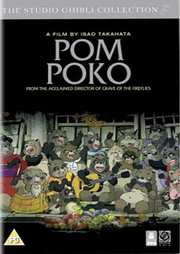


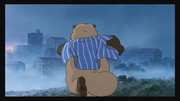

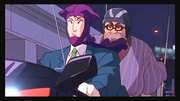
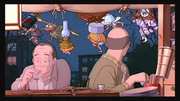
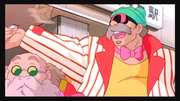
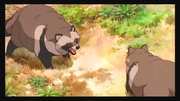
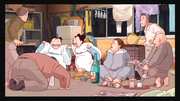
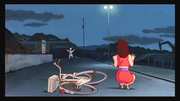
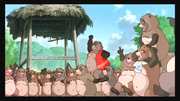
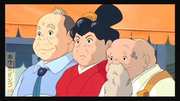

































Your Opinions and Comments
Be the first to post a comment!